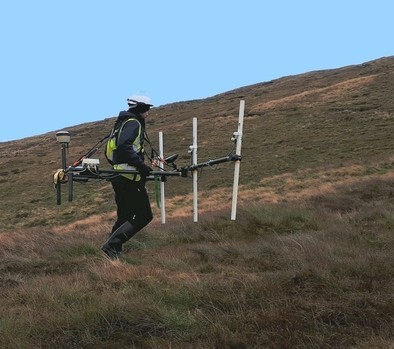
The precautionary investigative work near Sandwater was undertaken as part of Viking Energy’s application to increase the size of its previously consented main temporary construction compound in the area.
Interest in the hill slope was sparked by the results of a recent geophysical survey which highlighted an anomaly that could have been the remains of a buried stone structure at the proposed compound site.
A programme of field trials was drawn up in close consultation with Shetland Regional Archaeologist Val Turner and her team at Shetland Amenity Trust. VE consultants Headland Archaeology conducted the investigation in and around the area of interest with the help of an excavator and driver from Garriock Brothers.
Dr Turner said: “The geophysical survey showed a number of features which look as if they might have been created by people. It is not possible to know for certain until you have dug a test pit. It is also standard procedure to evaluate a percentage of the area randomly.”
A series of trenches was dug out and the turves carefully set aside to allow the archaeologists to inspect for signs of human activities. A report on the excavations is now being drawn up.
Diggers from Garriock Brothers have been busy reinstating the trenches and replacing the turves. If the construction compound planning application is approved and it goes ahead then some further archaeological investigation will be needed in the area.
As Dr Turner explained: “Some of the peat at Sand Water has been too deep to bottom in the machine trenches. This initial work was very much about risk management. If there is archaeology which can be located ahead of time it can either be avoided or built into the programme of works from the outset.”
She added: “We will continue to work with the contracting archaeologists and monitor the work carried out as the development progresses.”
Viking has already carried out surveys of other small parts of the wind farm site and areas close by. A drone will be used to do more extensive geophysical surveys in the near future.
Dr Turner said: “All the indications so far are that the archaeological work is going well, with a few previously unrecorded sites being identified.”